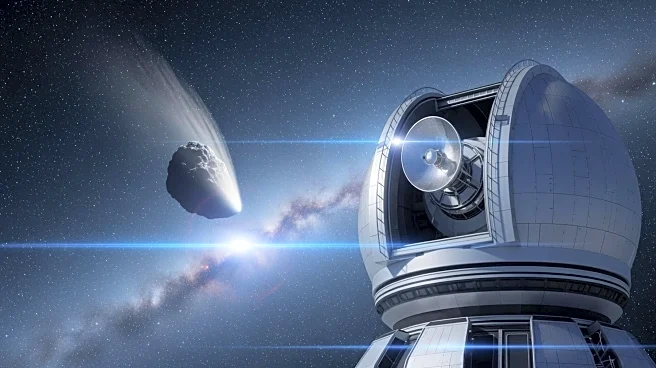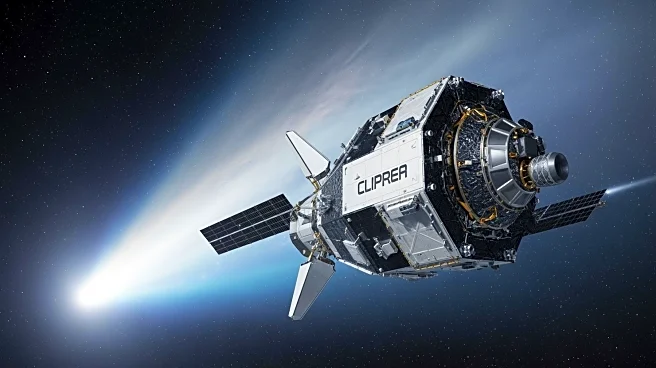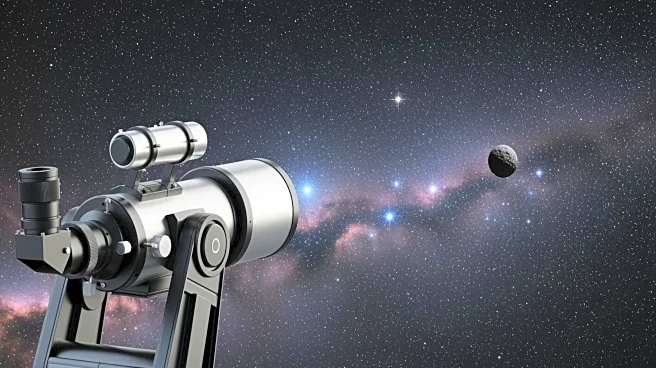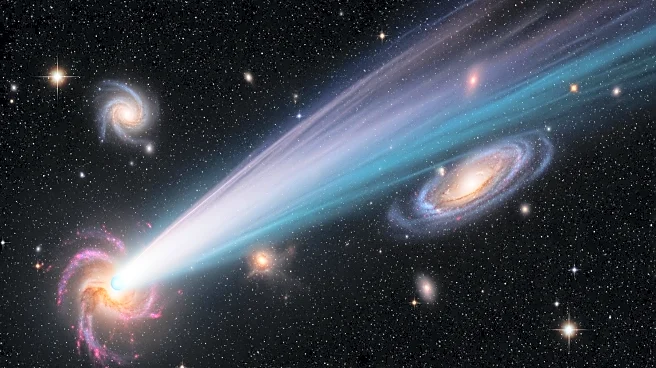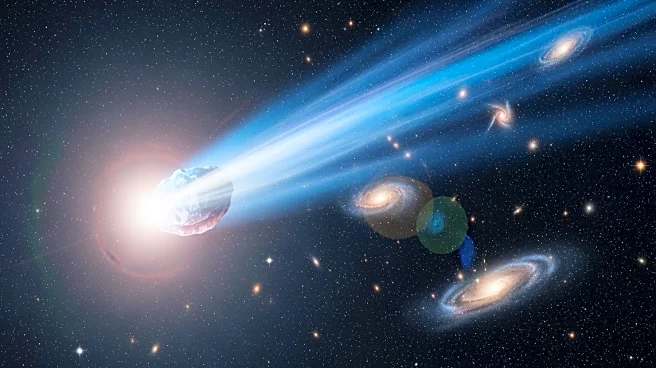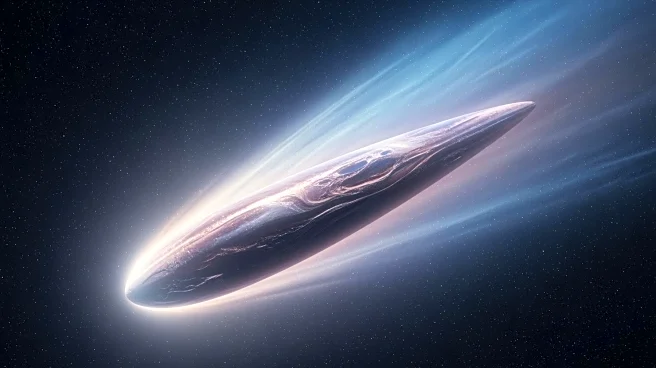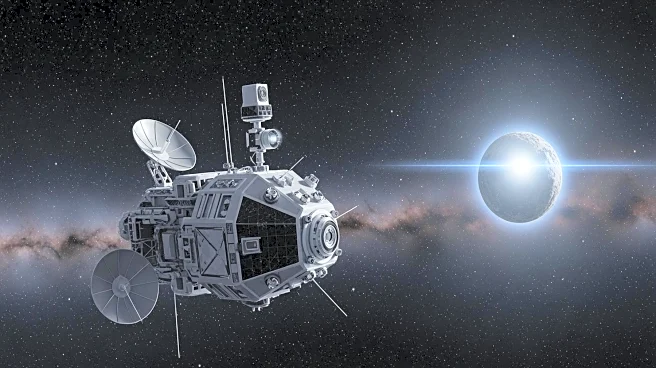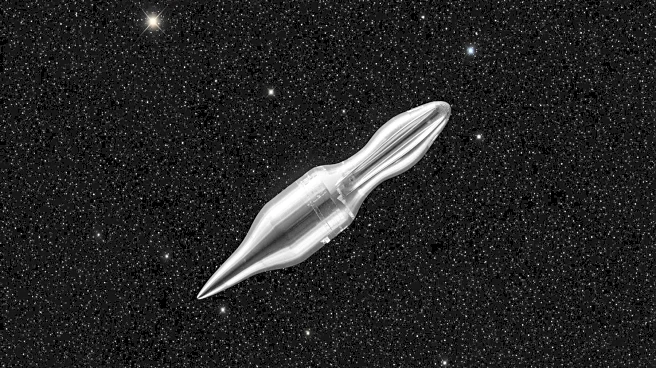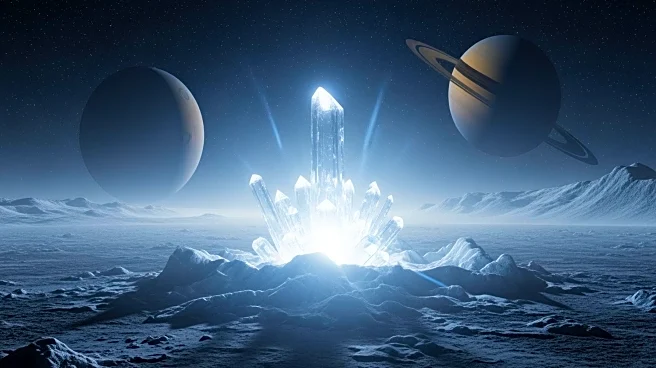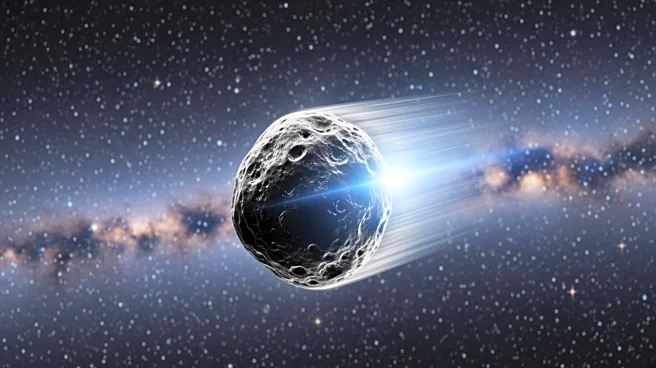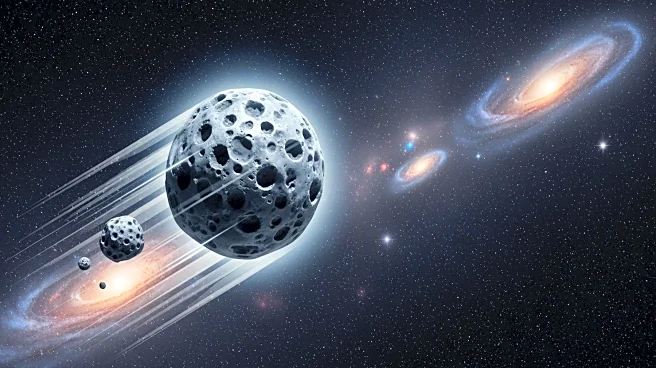What's Happening?
NASA and the European Space Agency (ESA) are closely monitoring the interstellar comet 3I/ATLAS, which was discovered on July 1, 2025, by the ATLAS survey. This comet is the third known object to enter our solar system from beyond, following 1I/ʻOumuamua
and 2I/Borisov. The comet's trajectory is highly hyperbolic, confirming it is not bound to the Sun and poses no threat to Earth, as it will not come closer than 1.8 astronomical units (AU) from our planet. The comet is currently exhibiting a dramatic sunward jet of gas and dust, a common behavior for comets as they approach the Sun. This activity has sparked interest and speculation, including unfounded rumors of alien technology, which have been debunked by scientists.
Why It's Important?
The observation of 3I/ATLAS provides a unique opportunity for scientists to study an interstellar object in detail. The comet's composition, rich in carbon dioxide and water ice, offers insights into the conditions of its origin, potentially from a carbon-rich environment predating our Sun. This research could enhance our understanding of other solar systems and the formation of celestial bodies. The comet's behavior and trajectory are being closely studied by a fleet of telescopes and spacecraft, including NASA's Hubble and James Webb Space Telescopes, as well as ESA's Mars Express and ExoMars orbiters. The data collected could contribute significantly to the field of astronomy and our knowledge of interstellar objects.
What's Next?
As 3I/ATLAS continues its journey through the solar system, it will reach its closest point to the Sun, known as perihelion, on October 29-30, 2025. Following this, the comet will head back out of the solar system, crossing Jupiter's orbit by March 2026. ESA's JUICE probe is scheduled to observe the comet post-perihelion, and other spacecraft, such as ESA's Hera and NASA's Europa Clipper, will pass through the comet's tail, potentially sampling ions from this interstellar visitor. These observations will provide further data on the comet's composition and behavior, contributing to ongoing research and understanding of interstellar phenomena.
Beyond the Headlines
The study of 3I/ATLAS not only advances scientific knowledge but also highlights the importance of international collaboration in space exploration. The joint efforts of NASA and ESA, along with other global observatories, demonstrate the collective interest and capability in studying celestial phenomena. Additionally, the debunking of alien probe rumors underscores the need for scientific literacy and critical thinking in the face of sensational claims. This event serves as a reminder of the vastness of space and the potential for future discoveries that could reshape our understanding of the universe.
